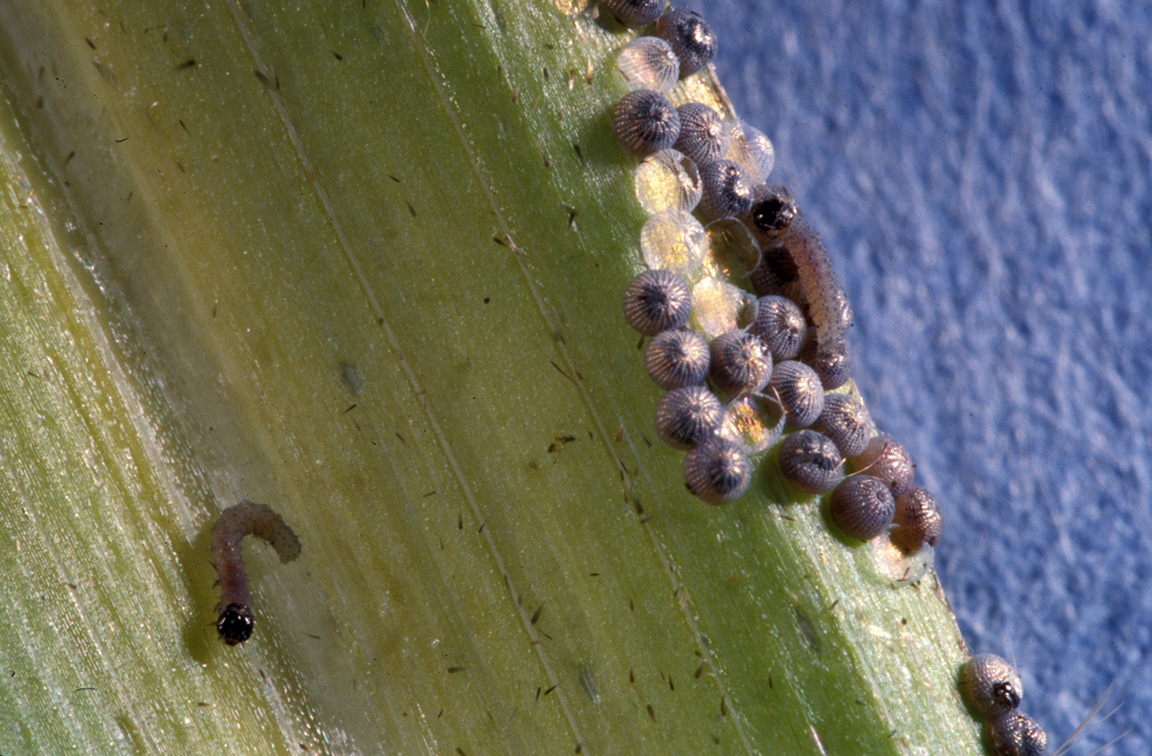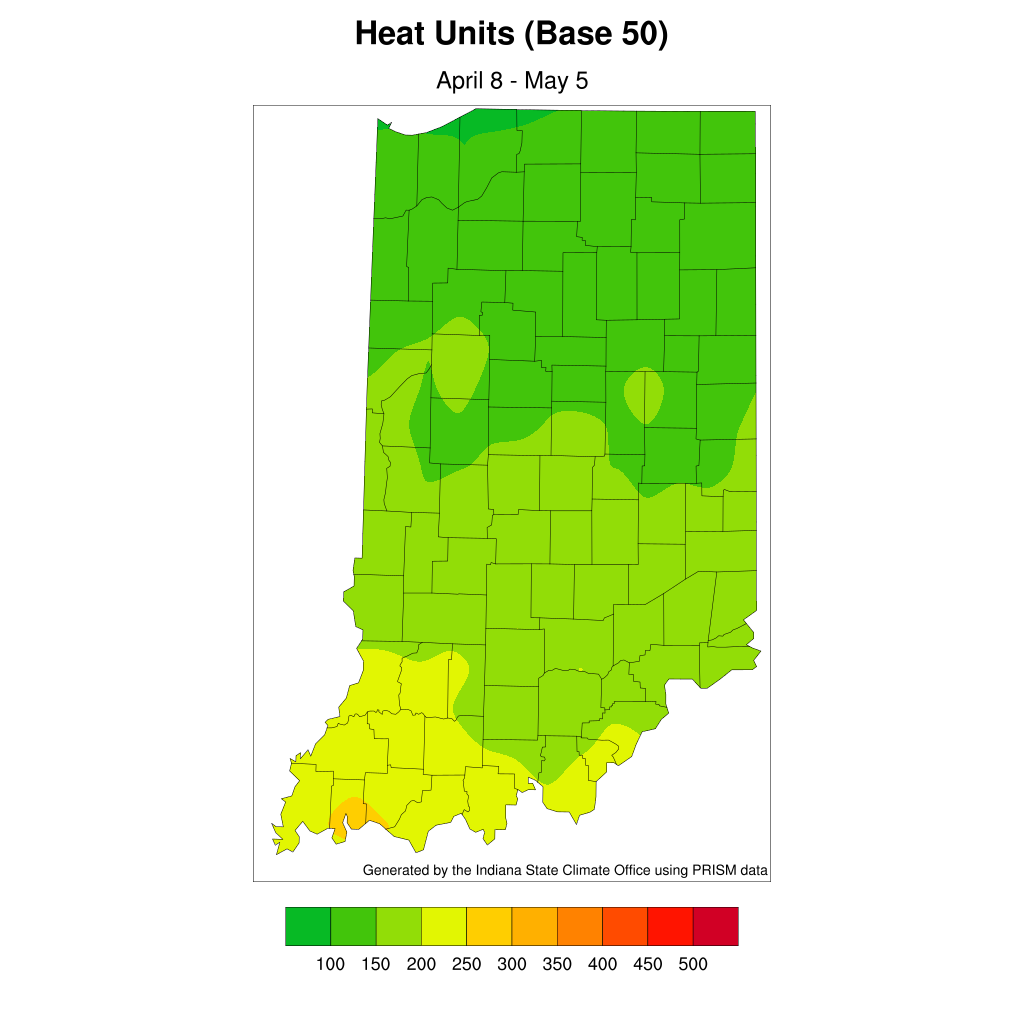It is still believed that black cutworm does not over-winter in the Corn Belt, but rather they are carried here on weather fronts and literally “rain” on Indiana. So, every year is a reset with this pest. Referring to the “Black Cutworm Pheromone Trap Report,” you see that many of our cooperators throughout the state trapped 9 or more moths in a two-night period, referred to as an “intensive capture.” Pest managers understand that this is only one piece of the puzzle when it comes to determining if, and when, black cutworm threaten our crops.
Because black cutworm’s egg hatch and larval development is triggered by heat (50°F threshold), it takes some time for them to reach the size to damage, and/or cut, corn seedlings, accumulation of about 300 heat units. The accompanying map, supplied by the Indiana State Climate Office, shows the approximate development of black cutworm larvae at the time of this writing. They, like the planted crops, are waiting for warmer temperatures to grow!

These hatching black cutworm larvae will need food (e.g., weeds) and much heat to reach the damaging stage. (Photo Credit: John Obermeyer)
Black cutworm does not concern corn producers as it did for decades, probably for two reasons, planting date and seed-applied insecticides. The trend with earlier/more planting and the improved hybrid’s early vigor has likely allowed corn to outgrow larval development. Too, with virtually all corn seed treated with a seed-applied insecticide, there is systemic protection within the corn seedling. Though this translocated insecticide is short-lived, it is generally enough for early developing black cutworm larvae. It is important to note that this is not true with mid-later developed larvae. Think…black cutworm initially feeding and developing on weeds/cover crops and then shifting to emerging corn.
So, timing, and intensity, of moth captures allows us to begin tracking heat unit accumulations and anticipating larval development. I’m grateful to pheromone trappers from Posey to St. Joseph Counties that are watching and counting. Soon, as temperatures warm, it will be time for pest managers to take the next step, that is monitoring of seedling corn, especially in high-risk fields. Happy scouting!



